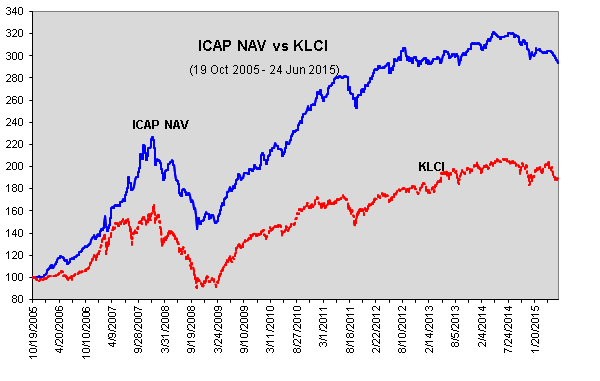However, Templeton Emerging Markets Group believes within the emerging-markets universe, it sees a number of small-cap stocks with shining potential that should not be ignored.
According to Dr Mark Mobius, executive chairman of Templeton Emerging Markets Group, they have found that as an asset class, emerging-market small cap is one of the most widely misunderstood and underutilised among investors.
“It is often perceived to be a place to avoid in times of uncertainty, but we see things differently.
“Many small companies are driven by local market dynamics and are therefore less dependent on global market trends,” he said.
Mobius went on to note that the small-cap emerging-market universe is anything but small—there are thousands of small-cap stocks available to invest in today, and the investment universe continues to expand due to the gradual liberalisation of equity markets to foreign investors and the continued expansion of equity markets through initial public offerings, secondary offerings and privatisations.
Among the many reasons to consider investing in small-cap stocks, smaller companies in emerging markets are generally privately owned, competitively operated, more local and are often larger players in smaller industries, Mobius said.
“Aside from relatively high organic growth compared with most larger companies, industry consolidation and acquisitions by larger companies as well as increased investor attention are additional potential sources of growth which can be independent of the broader macroeconomic environment.
“Many of the stocks in this space are under-researched or unloved, giving us the opportunity to uncover interesting opportunities others may have overlooked.
“We see that as the essence of what investing in emerging markets generally is about—discovering undervalued stocks in burgeoning markets that could rise to become tomorrow’s stars,” he said.
Mobius went on to note that the Asian small-cap space is of particular interest to them, and they have been using recent market volatility to search for opportunities.
“We believe reforms taking place in many emerging markets in the region could prove to be beneficial for smaller companies.
“Additionally, since domestic demand is typically the main revenue driver for small-cap companies, the combination of good economic growth, a growing middle class and lower oil prices—which can help check inflation and support a lower-interest rate environment—could be an added benefit to smaller companies in the region, freeing up consumer dollars to purchase their products,” he added.
Mobius noted that within the small-cap space in emerging Asia, they currently favor consumer-oriented companies given the growth opportunities they see across many markets, as well as health care, pharmaceuticals and biotechnology companies.
He further noted that this of course does not mean these companies are all well managed or worthy of investment.
“Therefore, purchasing small-cap stocks through a passive (index-based) strategy may produce unintended consequences.
“Stocks with poor growth prospects, poor corporate governance or other such factors may be components of a small-cap benchmark index, but they might not be desirable to invest in over the long term,” he said, adding that regular index rebalancing can generate significant portfolio turnover for passive investors.
“We strive to generate alpha1 through our bottom-up stock selection process, looking for companies that we think can increase their market cap by a multiple over a five-year time horizon, and we strive for only modest yearly turnover,” Mobius said.
On risk, Mobius pointed out that it is certainly an important part of a discussion about small-cap investing.
“I’ve never met a client who complains about upside risk. What worries clients is downside risk, and this is where we think we add value as active investors.
“Our team maintains an unrelenting focus on quality, seeking fundamentals that are on almost every measure superior to a benchmark index, including higher return on equity (ROE), profit margins and earnings-per share (EPS) growth, lower debt, better dividend yield, and most importantly for us at Templeton, cheaper valuations in terms of priceearnings ratios,” he said.
Mobius noted that contrary to many investor assumptions, the emerging-market small-cap benchmark index, as measured by the MSCI Emerging Markets Small Cap Index, at times has been less volatile than the broader index, the MSCI Emerging Markets Index, as well as the Russell 2000® Index, a US small-cap benchmark.2
“To us, that makes sense because small-cap companies are less correlated with each other, and less integrated into global markets than large caps generally speaking,” he said.
Mobius further noted that there are also numerous inefficiencies in small-cap markets, offering potential for alpha.
In the US, small-cap stocks generally trade at a premium to large caps in terms of price-earnings, due to the higher growth they can provide, he says.
“When you look at emerging markets, sometimes the opposite may be true. In India, for example, small caps are generally trading at a discount to large caps.
“Much of this investment money is what we’d call ‘lazy money’, or passive investment money, concentrated in large-cap index stocks that are not only more expensive but also subject to the volatility generated by rapid inflows and outflows of such foreign investments.
“Accordingly, we have found many undiscovered opportunities in Indian small caps,” he added.
Overall, Mobius noted that small-cap stocks have the potential to offer what is becoming ever-more rare in a slowing global economy—growth—and not only in India.
“Many emerging markets offer this strong growth potential—with many small-cap stocks available to potentially take advantage of it,” he concluded.




